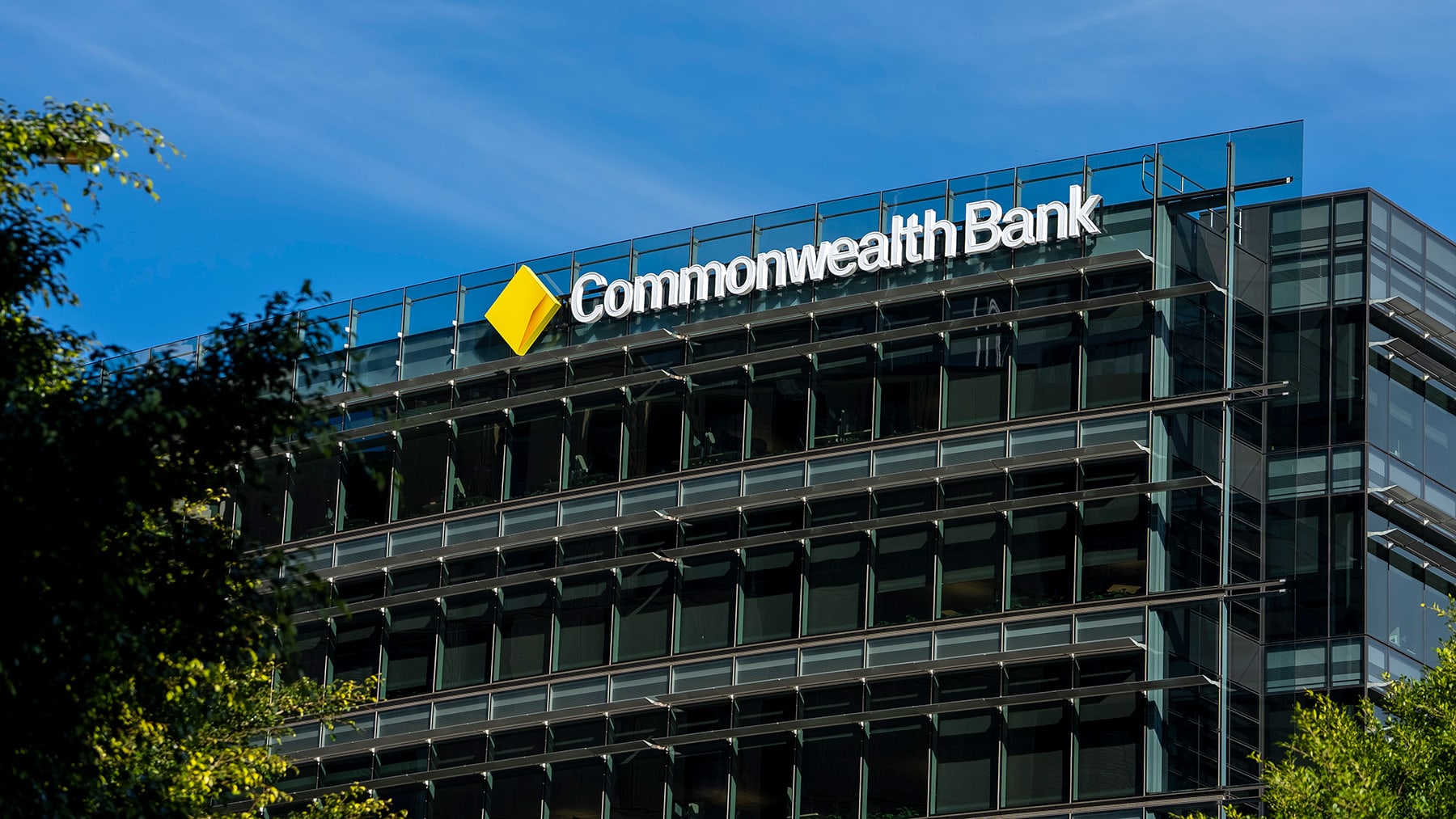Borrow
RBA’s next move: Why a November cut could reset corporate risk budgets
Australia’s unemployment rate has risen to a four‑year high, sharpening the case for another Reserve Bank easing as growth moderates. With GDP expanding 0.6% in the June quarter and 1.8% year on year, the economy looks soft enough to justify a further trim without reigniting inflation. For boards and CFOs, the bigger story is the playbook this unlocks: recalibrated WACC, revived capex, and a tactical window for refinancing and M&A.
RBA’s next move: Why a November cut could reset corporate risk budgets
Australia’s unemployment rate has risen to a four‑year high, sharpening the case for another Reserve Bank easing as growth moderates. With GDP expanding 0.6% in the June quarter and 1.8% year on year, the economy looks soft enough to justify a further trim without reigniting inflation. For boards and CFOs, the bigger story is the playbook this unlocks: recalibrated WACC, revived capex, and a tactical window for refinancing and M&A.

Forget the headline debate about whether the Reserve Bank cuts in November; the more material implication is that the easing cycle is not finished. A labour market that’s loosening at a measured pace and quarterly GDP growth of 0.6% in June (1.8% year on year, ABS) signal an economy cooling but not cracking. That combination puts optionality back on the table for business: lower funding costs, scope to re‑start shelved projects, and a stronger case for productivity investments that were marginal at higher rates.
What the data is really saying
Australia’s unemployment rate has climbed to its highest level since late 2021, consistent with the Reserve Bank’s earlier guidance that the market would “continue to ease this year, but to remain somewhat tight over much of the forecast period” (Statement on Monetary Policy, August 2024). In February 2025, the Bank reiterated that “the unemployment rate will increase a little further” before stabilising. Meanwhile, national accounts show growth that is positive but subdued: GDP rose 0.6% in the June quarter 2025 and 1.8% over the year.
Policy context matters. The federal Budget 2025–26 noted that the Board reduced the cash rate in February, with real wages returning to growth. A fresh labour market softening, coupled with still‑modest output growth, supports the case that an additional cut remains plausible in November. State Street has flagged that timing as a live possibility; markets are effectively weighing a growth insurance cut against the risk of easing too early.
Transmission mechanics: Why a 25 bp cut is not trivial in Australia
Australia’s monetary transmission is unusually sensitive to the mortgage and SME channel given the prevalence of variable and short‑fixed loans. A 25 basis point reduction delivers rapid cash‑flow relief to households and small businesses, with flow‑through to discretionary spending and working capital. For corporates, even a modest cut trims weighted average cost of capital (WACC), nudging hurdle rates lower and bringing borderline projects into scope.

Financially, the knock‑ons cluster in three places: debt service coverage ratios (easier covenants), valuation multiples (especially for duration‑sensitive equities like REITs and infrastructure), and credit spreads (scope for primary issuance at tighter coupons). The RBA’s gradualism means the tailwind is incremental, but sequential quarter‑on‑quarter easing compounds into meaningful budget flexibility.
Winners, laggards and the currency lever
Sectorally, think barbell. On one end: consumer discretionary, homebuilders and housing‑adjacent suppliers, and listed property. Their earnings maps are tightly coupled to funding costs and household cash flow. On the other: exporters and globally priced commodities, which benefit if a cut nudges the Australian dollar lower at the margin. A softer AUD tends to improve revenue translation for miners, agricultural producers and software exporters while pressuring import‑reliant retailers’ margins.
Capital‑hungry technology and healthcare platforms also stand to gain: lower discount rates lift long‑duration cash flow valuations and reopen the equity issuance window for growth capex. Australia’s AI innovation gap—identified in 2025 ecosystem analysis as a shortfall in commercialisation relative to adoption—could narrow if cheaper capital coincides with clearer governance. The public sector has laid groundwork: the Australian Government’s 2024 AI policy for responsible use and the ATO’s governance approach to general‑purpose AI signal institutional comfort with scaled deployment. Cheaper money plus regulatory clarity is a potent recipe for productivity investment.
Boardroom playbook: Cash, capex and M&A under an easing bias
Translate the macro into a control‑room plan using a simple three‑lens framework—Balance Sheet, P&L, Strategy:
- Balance Sheet: Pull forward refinancing to pre‑emptively lock lower coupons; extend duration selectively while the curve is supportive. Tighten interest rate risk policies—hedge bands can be widened to capture downside rate optionality without over‑hedging.
- P&L: Re‑set hurdle rates and revisit deferred projects in logistics automation, AI‑enabled service operations and energy efficiency. Re‑model sensitivity at 25–50 bp lower WACC; many projects move from marginal to viable.
- Strategy: Scan for tuck‑in acquisitions where earnings accretion improves under lower funding costs. An easing bias historically correlates with a pickup in domestic M&A volumes as bid‑ask spreads narrow.
Capital markets positioning for institutional investors points the same way: add duration in high‑quality bonds as policy risk skews to easing; maintain exposure to investment‑grade credit where spreads can compress; tilt equities towards quality growth and interest‑sensitive cyclicals. Gold’s resilience amid global rate‑cut narratives underscores ongoing hedging demand, but the local story is primarily about duration and credit.
Implementation reality: Don’t over‑rotate
The RBA’s messaging emphasises gradualism. A single cut doesn’t guarantee a rapid cycle, and the Bank has been explicit that the labour market stabilises as growth picks up. That cautions against over‑using balance sheets or assuming a swift return to ultra‑low rates. Practical constraints also remain: wage dynamics are turning positive in real terms, and input costs for tradables remain sensitive to currency moves.
Execution checklist for CFOs and treasurers:
- Refinance ladder: Prioritise maturities inside 24 months; negotiate covenants reflecting improved coverage under lower rates.
- Hedge discipline: Blend pay‑fixed swaps with optionality to benefit from further easing; avoid binary positioning.
- Supplier terms: Use cheaper working capital to secure early‑pay discounts; lock in FX where a softer AUD could bite.
- Workforce planning: Use the softer labour market to rebalance critical skills without aggressive wage escalation; retain investment in training to capture productivity gains.
Productivity investments: The AI and automation window
Australia’s opportunity is to convert easing into productivity, not just consumption. Government progress on AI governance (2024 policy for responsible use, ATO frameworks for general‑purpose AI) lowers adoption risk. Yet research highlights a persistent commercialisation gap. Businesses can arbitrage that gap by prioritising AI deployments with near‑term ROI—claims automation, demand forecasting, and fraud detection—where benefits are measurable within 12–18 months.
Pair funding tailwinds with disciplined stage‑gates: pilot with clear KPIs, ring‑fence data governance, and align with cyber risk appetites. In sectors like energy, case studies from wind‑farm acceptance show that stakeholder engagement is a gating factor for project success; apply the same logic to AI roll‑outs with employees and customers to accelerate adoption and avoid backlash.
Scenarios: Base case and risk case for the next 12 months
Base case: One additional cut within the next meeting or two, followed by a pause to assess inflation and employment dynamics. This is consistent with RBA guidance that the market eases then stabilises as GDP growth firms. Growth remains modest (around the recent 0.6% quarterly pace), unemployment edges higher before plateauing, and the AUD stays range‑bound to slightly softer.
Risk case: A sharper slowdown in labour demand or global shocks could warrant more than one additional cut; conversely, if services inflation proves sticky, the Bank could delay easing into early 2026. Either path argues for agility: flexible hedging, scenario‑based capex approvals, and M&A optionality rather than fully committed deal pipelines.
The signal beneath the noise is clear. The rate debate is less about calling the month and more about seizing the window it creates. In a cautious but easing environment, disciplined operators will refinance early, invest in productivity, and use selective M&A to compound advantages—while keeping dry powder in case the cycle surprises.

Banking
Commonwealth Bank leads consideration while People First Bank tops satisfaction in YouGov’s latest rankings
In a revealing snapshot of Australia's banking landscape, the Commonwealth Bank (CBA) has emerged as the most considered financial institution among prospective customers, according to YouGov's ...Read more

Banking
End of the easing: what a major bank’s call signals for Australian balance sheets
A major Australian bank now argues the Reserve Bank’s rate-cut run has hit a pause, resetting the risk-free rate narrative across corporate Australia. The Reserve Bank of Australia’s latest Statement ...Read more

Banking
Open banking, real returns: How an Australian brokerage turned CDR data into deal velocity
Open banking is no longer a whiteboard theory—it’s a working growth engine. This case study unpacks how a mid-sized Australian brokerage (“Pink Finance”) operationalised Consumer Data Right (CDR) data ...Read more

Banking
Open banking’s quiet revolution: how one broker’s data play rewrites speed, trust and margin
Open banking is shifting from compliance cost to commercial engine, and early adopters in Australia’s broking market are already monetising the curve. The playbook: consented bank-grade data piped ...Read more

Banking
Open banking in action: An early adopter’s playbook—and the ROI case for Australian brokers
Open banking is shifting from conference buzzword to operational backbone in Australia’s broking sector. Early adopters are using bank-grade data and AI to compress underwriting cycles, cut compliance ...Read more

Banking
Australian brokerage pedals ahead using consented data for a speedy advantage
Open banking is no longer a concept; it is an operating model shift changing how brokers originate and package credit. Australia’s early movers, backed by the Consumer Data Right (CDR) and a ...Read more

Banking
BOQ’s mortgage squeeze is a market signal: where banks will win next as competition bites
Bank of Queensland’s shrinking home-loan book is more than a single-institution story; it’s a barometer of how Australia’s mortgage market is being rewired by broker power, non-bank agility and ...Read more

Banking
PayPal Open Debuts in Australia: A Unified Platform for Business Growth
Sydney, 14 October 2025 – In a significant move to bolster commerce capabilities for businesses across Australia, PayPal has officially launched its new merchant platform, PayPal OpenRead more

Banking
Commonwealth Bank leads consideration while People First Bank tops satisfaction in YouGov’s latest rankings
In a revealing snapshot of Australia's banking landscape, the Commonwealth Bank (CBA) has emerged as the most considered financial institution among prospective customers, according to YouGov's ...Read more

Banking
End of the easing: what a major bank’s call signals for Australian balance sheets
A major Australian bank now argues the Reserve Bank’s rate-cut run has hit a pause, resetting the risk-free rate narrative across corporate Australia. The Reserve Bank of Australia’s latest Statement ...Read more

Banking
Open banking, real returns: How an Australian brokerage turned CDR data into deal velocity
Open banking is no longer a whiteboard theory—it’s a working growth engine. This case study unpacks how a mid-sized Australian brokerage (“Pink Finance”) operationalised Consumer Data Right (CDR) data ...Read more

Banking
Open banking’s quiet revolution: how one broker’s data play rewrites speed, trust and margin
Open banking is shifting from compliance cost to commercial engine, and early adopters in Australia’s broking market are already monetising the curve. The playbook: consented bank-grade data piped ...Read more

Banking
Open banking in action: An early adopter’s playbook—and the ROI case for Australian brokers
Open banking is shifting from conference buzzword to operational backbone in Australia’s broking sector. Early adopters are using bank-grade data and AI to compress underwriting cycles, cut compliance ...Read more

Banking
Australian brokerage pedals ahead using consented data for a speedy advantage
Open banking is no longer a concept; it is an operating model shift changing how brokers originate and package credit. Australia’s early movers, backed by the Consumer Data Right (CDR) and a ...Read more

Banking
BOQ’s mortgage squeeze is a market signal: where banks will win next as competition bites
Bank of Queensland’s shrinking home-loan book is more than a single-institution story; it’s a barometer of how Australia’s mortgage market is being rewired by broker power, non-bank agility and ...Read more

Banking
PayPal Open Debuts in Australia: A Unified Platform for Business Growth
Sydney, 14 October 2025 – In a significant move to bolster commerce capabilities for businesses across Australia, PayPal has officially launched its new merchant platform, PayPal OpenRead more








